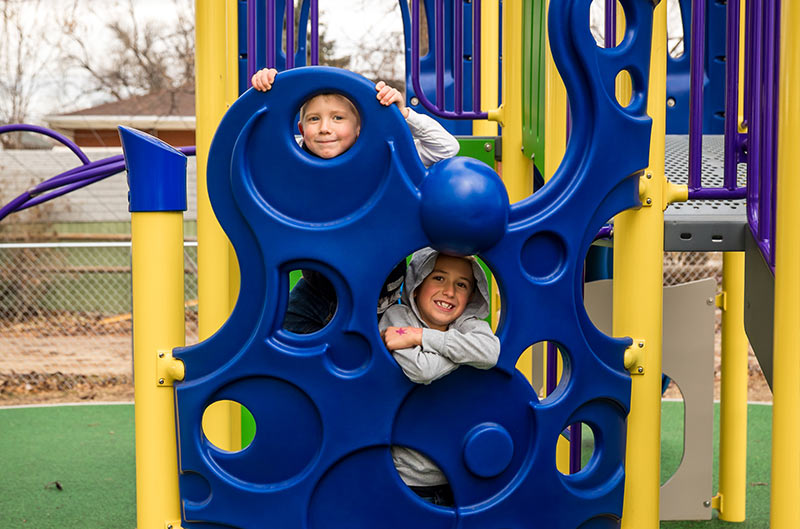
Into the Zone_ Playground Safety
Author: Austin Stanfel
Playground zones are areas around each play system that designate the space needed from each other for children to land safely and not intrude on different regions. These include slides, swings, stairs, monkey bars, and other conventional playground equipment. While they are next to each other, there are these boundaries, aka zones, that are made to show how much space a child must have when using them. They don’t invade other zones, are safe for children to be within, and are made to prevent overcrowding in one area that spills into the next part of the playground, causing danger for other children.
For example, a child falling from one place, such as the swing, and land in another area, such as the slide, they and others can get hurt. Logistically, there must be six feet of space around the playground structure to give freedom for a child to not land on another part of the playground. Most grounds are made from rubber, something soft and can absorb the fall, especially for taller structures that a child may jump from, which then needs a more significant zone, while smaller features have small zones.
The usual spots for large zones are swings, slides, ladders, and monkey bars. Swings need space in front and behind because the movement goes back and forth and high in the air. The slides are usually located on the side of the whole playground because they need the most space. Slides end on the ground, but children need the space to land and get up and cannot have others sitting in the area where they could get hit from behind. Besides, the space below the slide is also a zone because children shouldn’t be standing right under it, and things can fall. The same applies to ladders and going under the monkey bars. Give extra room for these stations because of the high probability of children falling.
These zones are built-in with the playground, so professionals who are responsible for safety checks measure the space. Adults should watch the children in how they play and how they land (feet first instead of headfirst) that it doesn’t danger others. The zones should be clear of things like balls, clothes, and shoes. The playground is fun for children, but it always has to be safe because playground injuries are unfortunately familiar with thousands going to hospitals every year. Over 20% of hospitalizations are for head injuries, including concussions and brain trauma, which can result in death.
Youngsters run around the playground and need plenty of room. It can get crazy sometimes, so parents need to keep a close eye on them. But they should also teach their children the zones for every playground structure as a way to establish the boundaries for using one station to prevent injury. By knowing the importance of these zones while supervising, parents, and children will know how to have a safe and fun experience at the playground.

